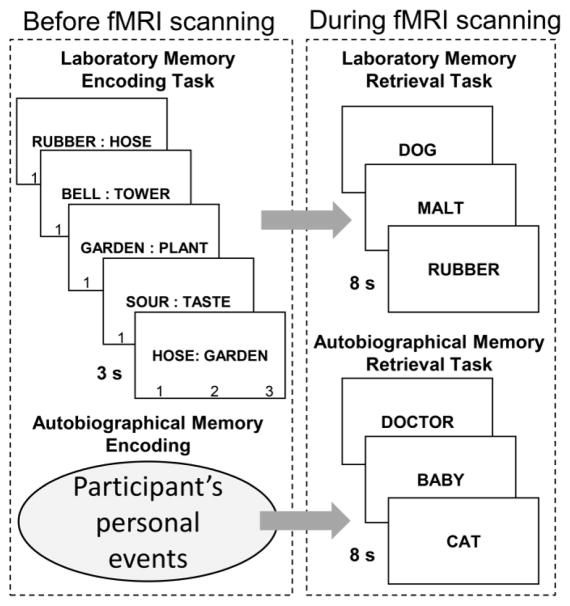Fig 1.
Laboratory and autobiographical memory tasks. During the LM encoding task, participants studied 60 semantically related word pairs (e.g., rubber-hose; hose-garden; garden-plant). Groups of three word pairs formed four-word “chains” (e.g., rubber-hose-garden-plant). Each word pair was presented for 3 s while participants rated the relatedness between the words (1 = medium, 2 = strong, 3 = very strong). During the LM task, participants were presented with the first word of a chain (e.g., rubber) and covertly recalled the three overlapping pairs sequentially (e.g., rubber→hose→garden→plant), pressing a button when they recalled the last word in the chain (e.g., plant). During the AM task, participants completed a Galton-Crovitz (Crovitz & Schiffman, 1974; Galton, 1879) word cue paradigm, in which participants were presented a word (e.g., dog) and covertly recalled a specific AM, pressing a button when they recalled the memory. AM = autobiographical memory; LM = laboratory memory.

